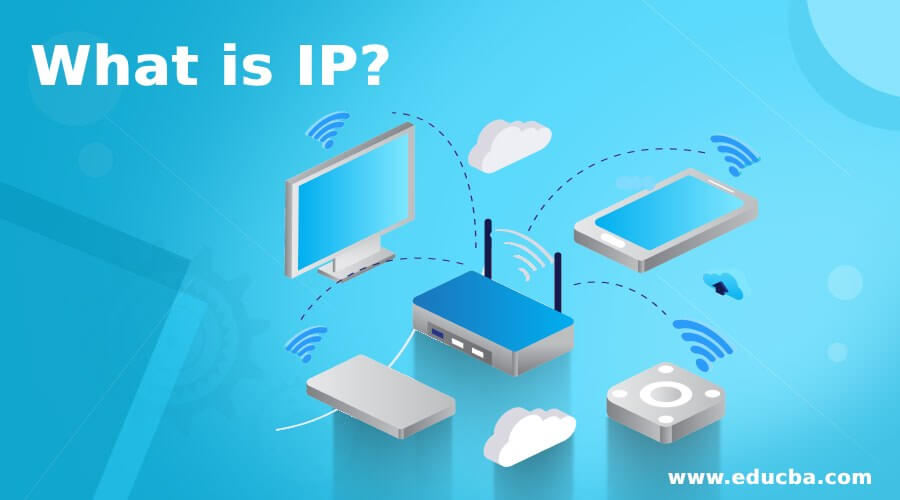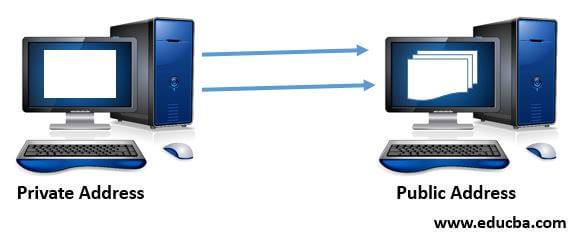Updated April 14, 2023
Introduction to IP
IP is short for Internet protocol. This is a TCP / IP protocol that serves to transfer data packets from the source to the destination. The principal function for IP is to supply the packets with the IP Addresses in the data packet headers from source to destination. IP specifies the packet structure which hides the data to be given and the addressing process which labels the datagram with information on its source and destination.
The connectionless service is provided by a Network protocol followed by transport protocols, UDP / IP and TCP/ IP, which is why the internet protocol is often referred to as UDP / IP and TCP/ IP. IPv4 was the first edition. Since IPv4, IPv6 was launched, and since 2006 it has been used more and more on the Internet.
Functions of IP
It is mainly used to address hosts, convey data to a packet structure, and route the data across one or more IP networks from source to destination. The Internet Protocol provides two main items, as described below, to achieve these features.
An Internet protocol specifies two terms:
- IP Addressing System
- Format of IP Packet
What is IP Addressing?
An IP address is a specific ID assigned to the internet linked device. There are a set of characters like 192.168.1.2 for each IP address. Users can not use these characters to access each entity’s domain name, so DNS resolution systems that turn human-readable domain names into a set of characters are used. Each IP packet contains two addresses, i.e. the device IP address of the packet sending device and the packet receiver’s device IP address.
Where is the IP Routing Done?
IP route determination is a method to decide the data path to be transported from the source to the target. As we know, the data is split into many packets, and every packet moves through a router Web before the final destination is reached. The routing algorithm decides the route that the data packet takes. The routing algorithm considers several factors, such as packet size and header, in order to determine the efficient route from source to destination for the data. When the data packet enters a specific router, it uses a routing table to decide the source and destination address’s next-hop address. This cycle continues until the destination is reached. The data is split into many packets so that all packets move to their destination individually.
For instance, the TCP layer separates the data in multiple packets from the email server to provide email numbers for the packets and sends them to the IP layer if an email is sent from the email server. This IP layer also sends the packet to the target e-mail server. This data packet is transmitted to the TCP layer by the IP layer and recombined into a message by the TCP layer on the target server. The response is forwarded to the email client.
History of Internet Protocol
Bob Kahn and Vint Cerf began developing the protocol in 1974. The transmission control protocol (TCP) is used in conjunction with, so together, the TCP / IP is named. IPv4, version 4, was the first major version of the Internet protocol. In 1981, the Internet Development Task Force (IETF) formally announced this protocol in RFC 791.
IPv6, which was version 6, was the second biggest version of the Internet protocol after IPv4. The IETF declared it officially in 1998. IPv4 was substituted as the primary justification for introducing IPv6. A major difference is that IPv4 uses 32 bits to address, while IPv6 uses 128 bits to address.
Different Types of IP Address
Basically, IP Address is divided into two types which are as follows:
- Private Address
- Public Address
1. Public Address
The public address can also be called as an external address since Public address and WAN addresses are grouped together. The public address can also be described as a method of communicating externally. This address is used for internet access. the computer provides remote access to the device with the public address available. the home server can be set up for Internet access with the aid of a public address. The ISP (Internet Service Provider) typically assigns this address.
2. Private Address
A private address can be called as an internal address which is grouped under the LAN addresses. the private address is used for network communication. private addresses are not redirected to this private address on the Internet; hence traffic can not be sent from the Internet. The private address space is allocated to the network using InterNIC. Private addresses are specifically allocated to certain computers, smartphones, and printers, that are kept within or within the business.
Recommended Articles
This is a guide to What is IP? Here we discuss the introduction and functions of the IP along with different types of IP address. You may also have a look at the following articles to learn more –




